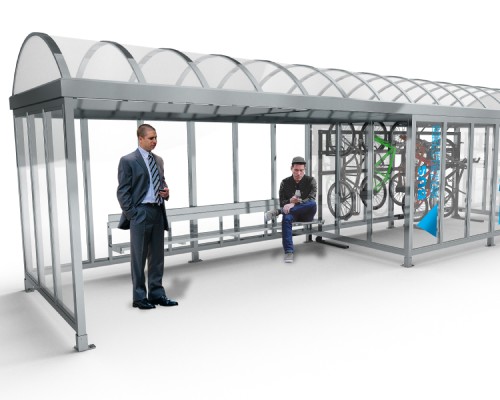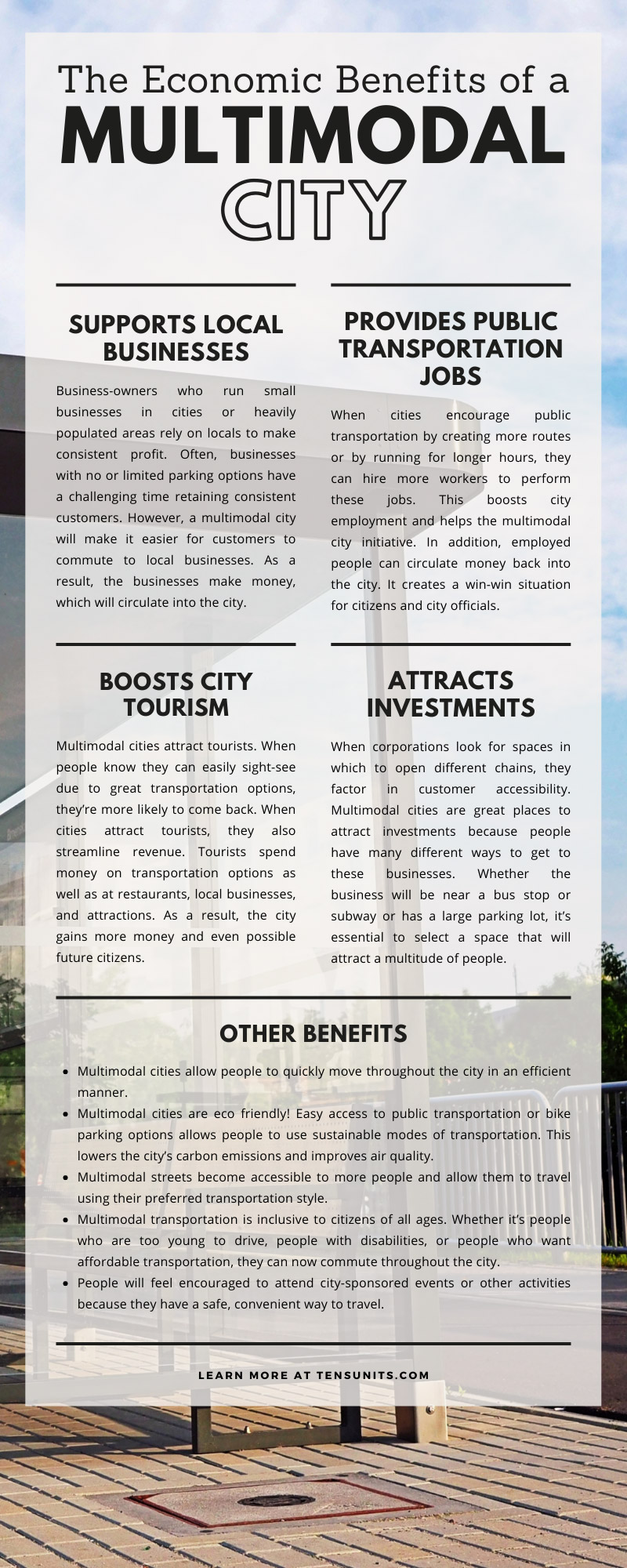
If you live in a city, you likely have access to different modes of transportation. Whether you’re on your daily commute or traveling to a social activity, you rely on public or private transportation. Thanks to a multimodal city initiative, you can travel safely and conveniently. This model not only helps citizens but also has great financial implications. Keep reading to learn about the economic benefits of a multimodal city today.
What Is a Multimodal City?
A multimodal city is one that supports different means of transportation for citizens. A multimodal street offers people a safe, convenient way to travel by car, foot, bike, or public transportation. Some examples of multimodal cities include New York, Chicago, and Memphis. These cities offer a variety of transportation options that make daily and leisure commutes possible.
How Does It Work?
Cities around the world have taken different approaches to developing multimodal networks that incorporate traditional and new forms of mass transportation. Traditional transportation includes buses and subways; newer forms of transportation include ride-sharing services such as Uber and Lyft. The goal of this transportation initiative is to create a convenient, affordable way for people to travel in cities. Whether it’s encouraging ridesharing, increasing service frequency, or coordinating modes of public transportation, it’s all about helping citizens commute.
Economic Benefits
The economic benefits of multimodal cities are major factors in transitioning different cities into this transportation initiative. Here are some of the benefits:
Supports Local Businesses
Business-owners who run small businesses in cities or heavily populated areas rely on locals to make consistent profit. Often, businesses with no or limited parking options have a challenging time retaining consistent customers. However, a multimodal city will make it easier for customers to commute to local businesses. As a result, the businesses make money, which will circulate into the city.
Provides Public Transportation Jobs
When cities encourage public transportation by creating more routes or by running for longer hours, they can hire more workers to perform these jobs. This boosts city employment and helps the multimodal city initiative. In addition, employed people can circulate money back into the city. It creates a win-win situation for citizens and city officials.
Boosts City Tourism
Multimodal cities attract tourists. When people know they can easily sight-see due to great transportation options, they’re more likely to come back. When cities attract tourists, they also streamline revenue. Tourists spend money on transportation options as well as at restaurants, local businesses, and attractions. As a result, the city gains more money and even possible future citizens.
Attracts Investments
When corporations look for spaces in which to open different chains, they factor in customer accessibility. Multimodal cities are great places to attract investments because people have many different ways to get to these businesses. Whether the business will be near a bus stop or subway or has a large parking lot, it’s essential to select a space that will attract a multitude of people.
Other Benefits
- Multimodal cities allow people to quickly move throughout the city in an efficient manner.
- Multimodal cities are eco friendly! Easy access to public transportation or bike parking options allows people to use sustainable modes of transportation. This lowers the city’s carbon emissions and improves air quality.
- Multimodal streets become accessible to more people and allow them to travel using their preferred transportation style.
- Multimodal transportation is inclusive to citizens of all ages. Whether it’s people who are too young to drive, people with disabilities, or people who want affordable transportation, they can now commute throughout the city.
- People will feel encouraged to attend city-sponsored events or other activities because they have a safe, convenient way to travel.
Things To Consider When Creating a Multimodal City
The planning process of a multimodal city takes time, and it’s essential to think of different components and factors. Here are some things to consider when you’re creating a multimodal city:
Existing Transportation Options
Assessing the city’s existing transportation options and thinking of ways to improve them are essential. Officials can look at the most popular transit options their citizens use and factor in private options as well. For example, they can compare the number of people who ride the bus to people who use rideshare services. In addition, officials can look at transportation options their city lacks. Perhaps the city doesn’t have an efficient train service—they can think about how this may affect citizens.
Impacts of Traffic
Traffic impact studies can show the heaviest-traffic areas and most popular commute times. If officials notice heavy street traffic in the mornings between 6 and 9 AM, they can think of ways to improve transit times, whether that’s by encouraging subway use or biking.
Extra Materials and Accessories
When you’re creating a multimodal city, thinking about the extra materials and accessories you’ll need to accommodate the new transportation is essential. For example, if the city plans on creating more bus stops, it should consider installing prefabricated bus stop shelters to provide safe seating for waiting passengers. In addition, things such as signs, bike racks, and rideshare lanes are things that officials can also think about adding.
Future Population and Employment Growth
A successful multimodal city relies on a mass amount of people. Although accommodating existing citizens may seem feasible, officials must think about the future population. What are the projections of new citizens? How many businesses plan to open within the next 10 years? What will the next public transportation innovation be? Officials must calculate potential growth corridors while creating multimodal streets.
Multimodal cities are great for heavily populated areas. They encourage citizens to use their preferred methods of transportation safely and conveniently. This is great for citizens, and it also has financial benefits.
We hope our guide on the economic benefits of a multimodal city was helpful to you. If you’re a city official thinking about improving your area with transit shelters, consider Handi Hut. We create top-quality bus shelters, bike parking, and other great products your city might need. If you have any questions, contact us today!

